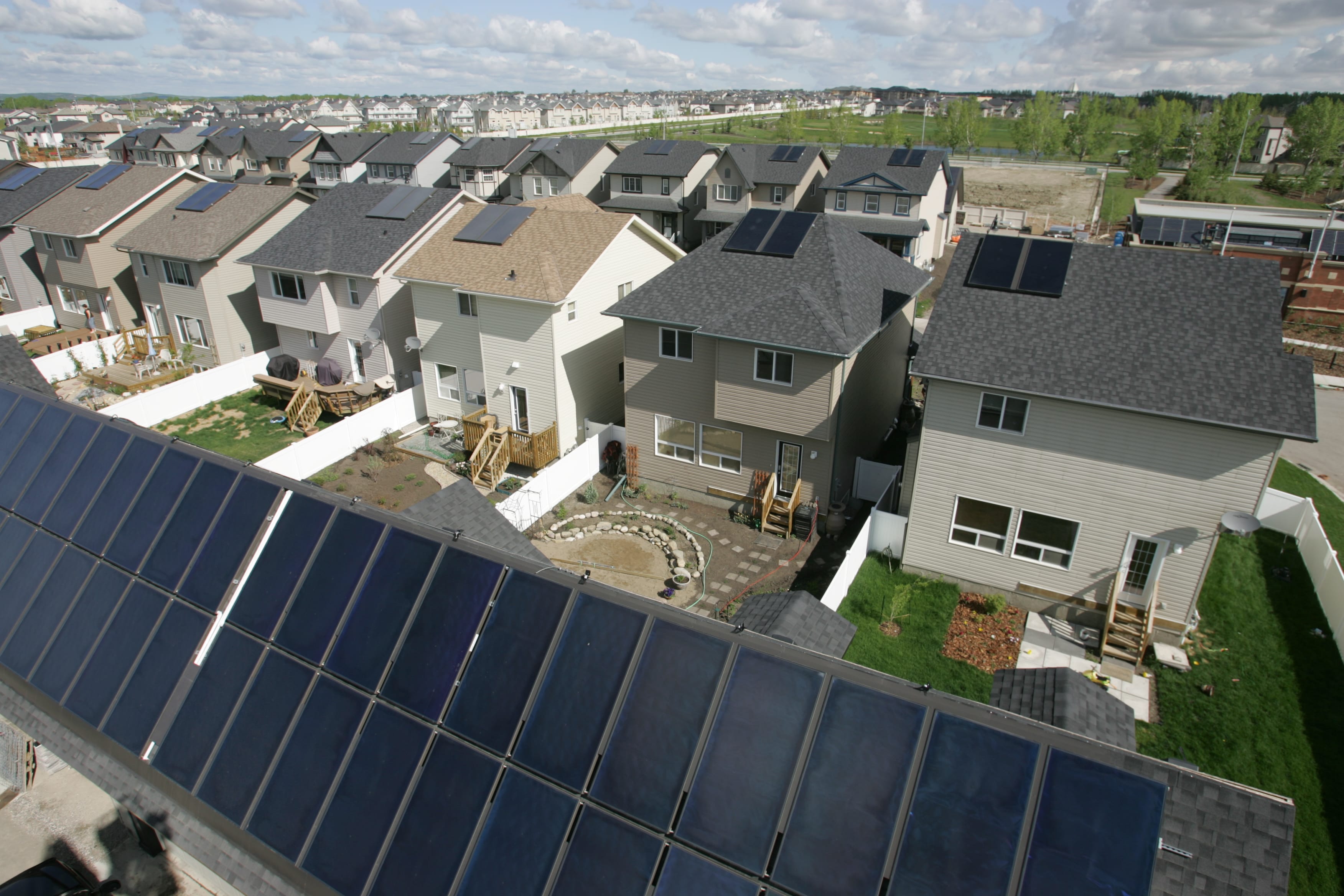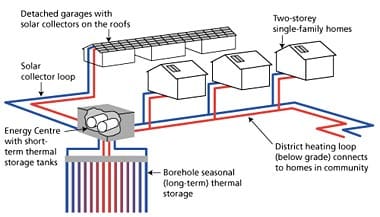Drake Landing Solar Community
- Details
Drake Landing Solar Community provides a real-world example of how conventional heating fuel consumption for space heating can be nearly eliminated, reducing greenhouse gas emissions by more than 5.5 tons per house annually.

This is made possible in the harsh 9,027 heating degree day climate by using solar heat collectors with seasonal heat storage, energy-efficient house design and construction, and a low temperature district heating network to distribute the heat to the homes. Inspiration for the project came from Natural Resources Canada’s solar research group’s exploration of innovative seasonal storage technologies that allow much greater use of solar energy for residential space heating
Sustainable Design All of the Drake Landing houses are located along two streets running east-west. Buyers could select one of six two-story models. The resulting mix gave a site average above-grade floor area of 1,565 ft2. Each house also has a full heated basement. Detached garages at the back of each lot face onto a back alley. A continuous roof connects the adjacent garages, creating large, uninterrupted roof surfaces to mount solar heat collectors. The covered walkways between garages provide shelter for a vehicle or trailer, or a play area for children.
The absence of garages at the front also contributes to an attractive streetscape. The houses are certified to meet Canada’s R-2000 standard, which promotes the use of cost-effective, energy-efficient building practices and technologies, and the Built Green Alberta program, which focuses on sustainable building standards. The houses’ envelopes are upgraded with higher insulation values, low-e argon-filled windows and improved airtightness and construction details, reducing the space heating load by an expected 30% compared to baseline houses.
Each home is also equipped with a stand-alone solar domestic hot water heater designed to supply 40% to 60% of the service water heating load by using two collectors mounted on each house roof. A conventional high-efficiency natural gas water heater backs up the solar water heater.

System Operation
A propylene glycol-water mixture is circulated through the collectors whenever their temperature is high enough to raise the temperature of the short term thermal storage (STTS). The antifreeze mixture in the pressurized collector loop is separated from the atmospheric pressure water in STTS and borehole thermal energy storage (BTES) by a heat exchanger. A second heat exchanger separates the water in the pressurized district loop from that in the STTS and BTES.
The control system anticipates the amount of heat that will be needed for space heating based on the outdoor ambient temperature. If the STTS contains surplus heat, it is used to charge the BTES, and when insufficient heat exists in STTS for the anticipated load, heat is moved from the BTES to charge the STTS. Heat is delivered to the houses through the two-pipe district heating system whenever it is required, and the temperature of the water supplied to the loop is increased as the ambient temperature drops below 27.5°F.
The STTS tanks are critical to the proper operation of the system, because they can accept and dispense heat at a much higher rate than the BTES can.
During periods of intense summer sunshine, the BTES field cannot accept energy as quickly as it can be collected; so heat is temporarily stored in the STTS tanks, with transfer to the BTES continuing through the night. This situation is reversed in the winter, when heat cannot be extracted from the BTES field quickly enough to meet peak heat demands, typically in the early morning.
Full Article at: http://www.hpbmagazine.org/attachments/article/